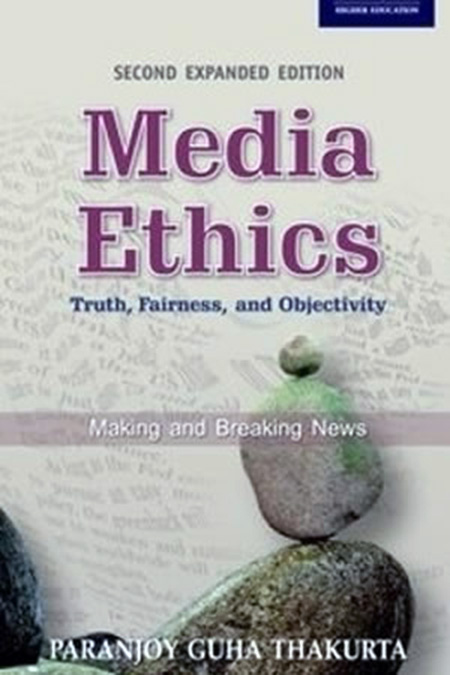The mass media across the world and in India as well are converging and consolidating. Creators of content are coming closer to distributors and disseminators. Erstwhile competitors are becoming collaborators. The dividing line between broadcasting and telecommunications is getting increasingly blurred. While these phenomena restrict consumer choice by reducing content diversity, the technological advantages of integration make these processes inevitable and inexorable. It has, therefore, become important to understand the consequences of such convergence (in technological terms) and consolidation (in terms of mergers and acquisitions leading to changes in control and ownership of media organisations) on the plurality and heterogeneity of the media. This article, the first in a three-part series, seeks to highlight the recent examples of convergence and consolidation in the Indian media in the context of new corporate conglomerates becoming strategic players by associating themselves with established media groups.
* * * * * * * * * * * * *
In the recent past, there has been an accelerating trend towards consolidation and convergence of media organisations across the world as well as in India. Far-reaching changes in technology, notably the rapid spread of mobile telecommunication and the internet, have removed geographical boundaries and cut through markets for media products, services, and genres. The consolidation of media organisations has been vertical, horizontal, and diagonal, often leading to market concentration and formation of oligopolies. The domination of media markets by the big few accompanied by the marginalization of the small and medium, has reduced choices for readers, viewers, and listeners by diminishing the diversity of content.
Technological convergence has led to consolidation of control over--and ownership of--media organisations in three broad forms: horizontal, vertical, and diagonal.
“Horizontal” mergers occur when two entities at the same stage of the “supply chain” or who are engaged in the same activity join hands or combine forces. A recent example in India is the acquisition in April 2012 by the company that publishes the Hindi daily, Dainik Jagran, which claims to be the most widely-read printed newspaper not only in India but in the world as well, of the company that published another Hindi daily, Nai Dunia.
“Vertical” expansion entails “forward/upstream” or “backward/downstream” integration into different stages of the supply chain, say, when the creators of content (owners of copyright) get into the retail and wholesale distribution of the same content to bring down transaction costs. Examples from India’s television sector would include the Rupert Murdoch-led STAR (Satellite Television Asia Region) group controlling cable distributor Hathway, the Zee group controlling direct-to-home (DTH) satellite channels provider Dish TV, and the Sun group controlling cable distributor Sumangali.
Together with both these forms of consolidation that are taking place, over the decades, one-time print-only companies have moved into radio, television and the internet. But what is perhaps more significant in the current context are new forms of “diagonal” mergers or “lateral” expansion that are now taking place--almost as an extension or evolution of horizontal and vertical mergers--where there is a strategic association between a telecommunications company and a media company to use common infrastructure. Two recent examples are: (a) the strategic association of Reliance Industries Limited (RIL), India’s largest corporate entity in the private sector, with the Network 18 and the Eenadu groups and (b) the Aditya Birla group acquiring a substantial holding in the Living Media group.
Subtle censorship
While such convergence makes for sound economic rationale by availing the benefits of economies of scale and scope, it also creates leeway for risks that could lead to the curbing of freedom of expression and impose subtle forms of censorship in the pursuit of goals like profit maximization and increasing market shares.
Not only in India but across the globe, media organisations have been coming together faster than ever before through mergers, acquisitions, and strategic associations, not only with competitors but with other organisations perceived as complementary to future aspirations. Convergence and globalization have led to cross-media ownership and the formation of integrated conglomerates (such as Time Warner/AOL, Pearson and Bertelsmann) that are able to reap the benefits of “economies of scale” by spreading costs of production and distribution and “rationalizing” the utilisation of resources. Convergence of media, telecommunications, and computing technologies has also blurred the distinctions between different media. The growing use of digital technology (or the reduction of information to binary codes comprising combinations of the digits, zero and one) has expedited this process.
More than a decade ago, Gillian Doyle of the University of Glasgow, who has studied the economics of the media, wrote in her book Media Ownership: The Economics and Politics of Convergence and Concentration in the UK and European Media (Sage, London, 2002):
“The implications of convergence are far-reaching. With the arrival of common digital storage, manipulation, packaging and delivery techniques for information (including all types of media content), media output can more readily be repackaged for dissemination in alternative formats. For example, images and text gathered for a magazine, once reduced to digits, can very easily be retrieved, reassembled and delivered as another product (say, an electronic newsletter). So, digitization and convergence are weakening some of the market boundaries that used to separate different media products.”
Doyle and others have for long argued that media convergence has drawn in the broadcasting, computing and information technology sectors in a manner in which the difference between broadcasting and telecommunications is all but disappearing. “Because of the potential for economies of scale and scope, the greater the number of products and services that can be delivered to consumers via the same communications infrastructure, the better the economics of each service,” she wrote, adding: “As traditional market boundaries and barriers have begun to blur and fade away, the increase in competition amongst the media has been characterized by a steady increase in the number of perceived distributive outlets or ‘windows’ that are available to media firms.”
In 2000, BBC World presenter Nik Gowing conducted a discussion on “corporatization of the media” that featured, among representatives of leading news organisations, Chris Cramer, the then president of CNN International. The discussion had deliberated on the implications of the world’s media getting concentrated in the hands of fewer and fewer companies. This, it was argued, led to the easing of journalistic quality and adherence to ethical norms in exchange for returns to shareholders. Other key issues of concern included the increasing influence of corporate stakeholders in newsrooms which led to occasional product placements and implicit restrictions on investigations that might bite the hand that feeds, namely, hurt advertisers, leading to the blacking-out of content unfavourable to big corporate interests.
The emergence of cartels and oligarchies is symptomatic of an increasingly globalized but homogenized communications “mediascape”, despite the growth of internet technology bringing about greater democratization by allowing for more user-generated content by producers-cum-consumers or “prosumers”. While the growth of the internet has led to a collapse of geo-spatial boundaries and lower levels of gate-keeping in checking information flows, the perceived increase in diversity of opinion has been simultaneously accompanied--paradoxically--by a shrinking in the number of traditional media operations in print, radio and television.
Political collaborator
In the political economy of the media the world over, there is an alarming absence of not-for-profit media organisations and the marginalization of small and medium- sized media organisations. Neither subscription- nor advertising revenue-based business models have been able to restrict this tendency of the corporate media to align with elite interest groups. Not just in economic terms, the corporate media is an active political collaborator seeking to influence voting patterns along lines of allegiances of owners which can, and often does, constrain free and fair exchanges of views to facilitate and strengthen democratic decision-making processes.
Despite several criticisms of the adage coined by Canadian media theorist Marshall McLuhan (1911-80) that the “medium is the message/massage” in the mid-1960s (see McLuhan and Lewis H. Lapham, Understanding Media: The Extensions of Man, MIT Press, 1964 and McLuhan and Quentin Fiore, The Medium is the Massage: An Inventory of Effects, Bantam Books, 1967), his postulate retains a certain contemporary relevance. The tensions between the corporate-dominated, highly-concentrated, commercially-oriented media industry and the bigger communication needs of a democratic society, as media scholar Arvind Rajagopal emphasises, cannot be more palpable than it is at present in India (The Hindu, January 24, 2012).
(Assistance in research : Ahana Banerjee)


